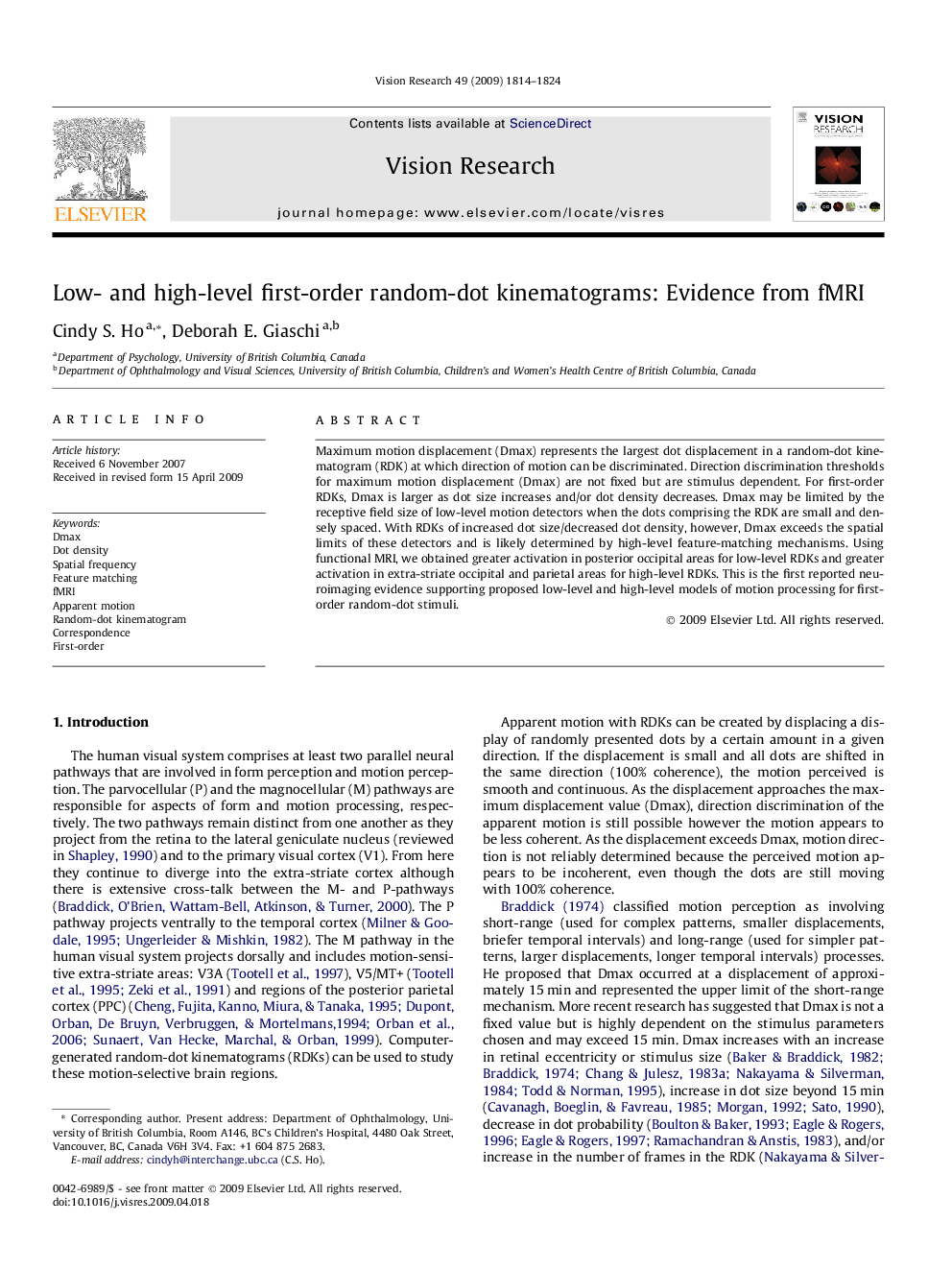| کد مقاله | کد نشریه | سال انتشار | مقاله انگلیسی | نسخه تمام متن |
|---|---|---|---|---|
| 4035261 | 1263516 | 2009 | 11 صفحه PDF | دانلود رایگان |

Maximum motion displacement (Dmax) represents the largest dot displacement in a random-dot kinematogram (RDK) at which direction of motion can be discriminated. Direction discrimination thresholds for maximum motion displacement (Dmax) are not fixed but are stimulus dependent. For first-order RDKs, Dmax is larger as dot size increases and/or dot density decreases. Dmax may be limited by the receptive field size of low-level motion detectors when the dots comprising the RDK are small and densely spaced. With RDKs of increased dot size/decreased dot density, however, Dmax exceeds the spatial limits of these detectors and is likely determined by high-level feature-matching mechanisms. Using functional MRI, we obtained greater activation in posterior occipital areas for low-level RDKs and greater activation in extra-striate occipital and parietal areas for high-level RDKs. This is the first reported neuroimaging evidence supporting proposed low-level and high-level models of motion processing for first-order random-dot stimuli.
Journal: Vision Research - Volume 49, Issue 14, July 2009, Pages 1814–1824